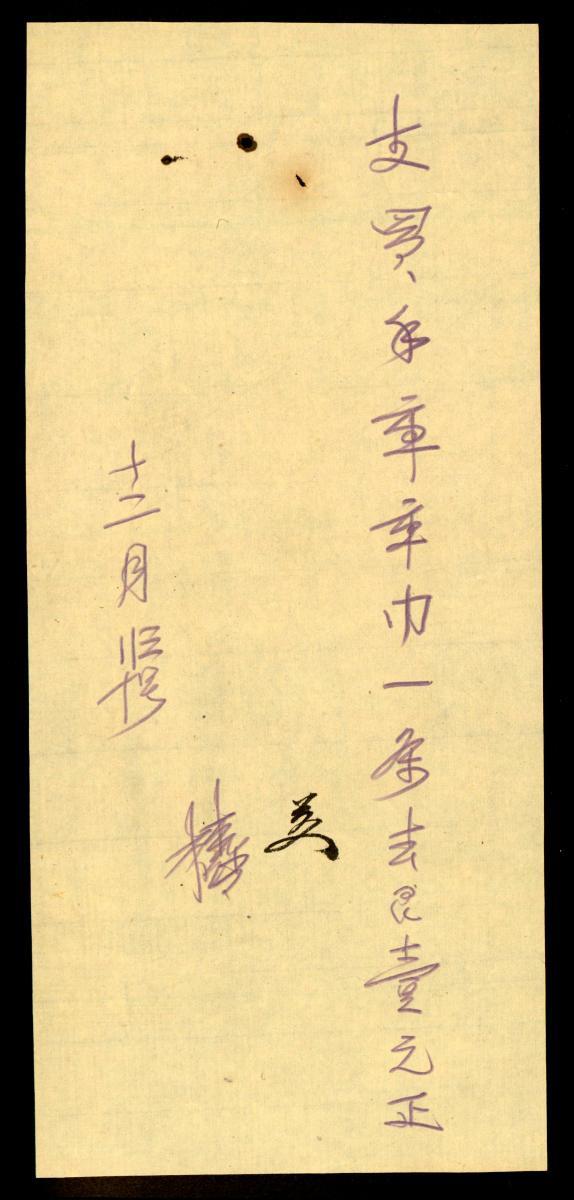This certificate was given to Mdm Goh Chang Kheng upon completion of learning how to teach the Japanese language. Mdm Goh was formally trained as a teacher in Singapore in the 1920s. She taught in a secondary school in Surabaya, Indonesia, in 1931, before returning to Singapore to teach. During the Japanese Occupation (1942–1945), she was a teacher at the Holy Innocents Chinese Girls’ School. At an interrogation session by the Kempeitai, Mdm Goh agreed to take the Japanese language course and teach the language in school. So she took her Japanese lessons at the Catholic High School in the afternoon after teaching in the morning. She would then go back to school the next day and teach her students what she had learnt in the Japanese language class. Mdm Goh showed confidence and fluency in her language proficiency when three Japanese soldiers came to observe her teaching in Japanese.Education was essentially a propaganda tool for the Japanese government who adopted an educational policy as part of the “Principles for the Gunsei Disposition of the Occupied Area” in March 1942, a month after the British had surrendered to the Japanese. One of the objectives was to promote the Japanese language as the lingua franca of the Greater East Asia Co-Prosperity Sphere. The Japanese deemed it necessary to spread Japanese values, to use their language to communicate with the people of Singapore and Southeast Asia, and to unify the multi-racial Japanese-occupied territories. The Japanese language was to be taught in schools, which meant teachers had to be taught the language first. The Syonan Special Municipality Normal School was set up to train local teachers to teach Japanese. Sometimes they had to teach their students Japanese when they had only attended a few lessons themselves. Nearly half of the curriculum and seven out of fifteen hours a week in primary school were used to study the Japanese language.















